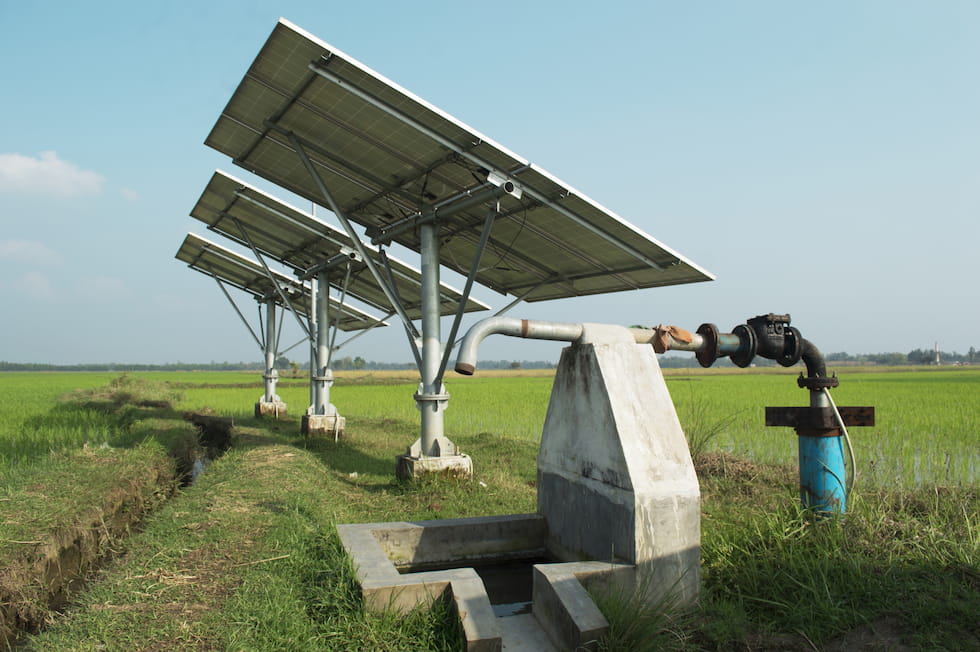
Solar-powered pumps are providing farmers eco-friendly solar irrigation systems and harvesting pivotal data to streamline local water sources. With unpredictable weather patterns leading to desertification and climate change, stakeholders are likely to invest in solar pumps, according to Global Market Insights.
The advent of novel technologies is likely to boost solar market revenue as new value chains continue to be created. Technological innovations are achieving peak levels as several solar-powered water pumps have been integrated with the Internet of Things (IoT) or remote monitoring. The IoT has also enabled a network of communication between a range of internet-enabled devices and solar pumps.
IoT Makes Inroads Into Solar Pumps
The use of IoT is likely to become a trend in the industry as it has enabled farmers to keep track of their pumps’ performance indicators and fuel savings. Technological developments in solar photovoltaics (PV) will boost operating strategies such as improved scheduling of power plants and advanced renewable energy forecasting.
Considerable uptake of the PV technology has been instrumental in reducing the cost of solar pumps, with easy-to-install and eco-friendly systems being widely tested in the market. Growth in PV technology improves the business outlook for solar pumps as stakeholders, including farmers and government agencies, vie to reduce operating costs.
Advanced technologies will become more prevalent with the use of thermal imaging cameras and drones to monitor irrigation fields. Already, thermal and satellite imagery is being used to calculate irrigation water demand and assess actual water supply.
Projected Market Growth
At a time when farmers in developing countries are deprived of proper irrigation facilities and do not have access to the electricity grid, the popularity of solar pumps has turned out to be pivotal in keeping up with irrigation demands. Off-grid measures have helped governments in supporting the global adoption of solar pumps.
With stakeholders in the agriculture sector seeking to identify income-generating opportunities, reduce post-harvest cost, boost productivity and increase efficiency, economic growth with a shorter payback period within the solar pump market has been projected to occur. In the latest research report compiled by Global Market Insights, Inc., the solar pump market size has been projected to grow substantially by 2026.
Government Funding & a Thriving Agriculture Sector
The use of solar pumps could augment agricultural productivity by enabling the diversification of cropping patterns and the efficient use of water. Asia-Pacific (APAC) has become a popular target for stakeholders as the region looks to decrease dependency on electricity and other fuel sources. Developing countries envisage solar pumps improving water quality through fertigation and filtration systems and mobilizing groundwater resources when rainfall patterns are erratic.

